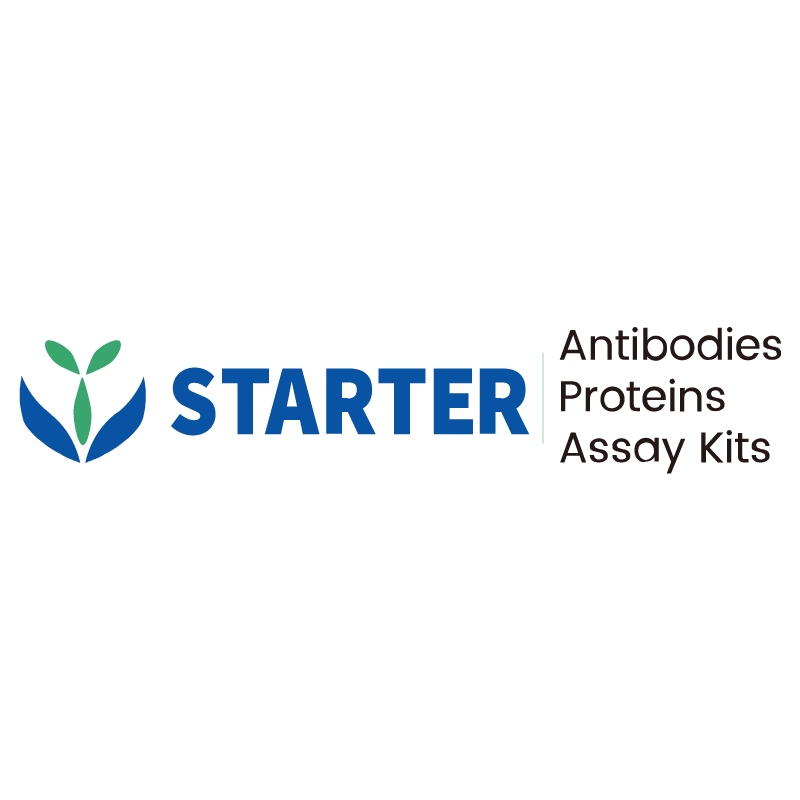WB result of EpCAM Recombinant Mouse mAb
Primary antibody: EpCAM Recombinant Mouse mAb at 1/500 dilution
Lane 1: HeLa whole cell lysate 20 µg
Lane 2: MDA-MB-231 whole cell lysate 20 µg
Lane 3: HT-29 whole cell lysate 20 µg
Lane 4: A431 whole cell lysate 20 µg
Negative control: HeLa whole cell lysate; MDA-MB-231 whole cell lysate
Secondary antibody: Goat Anti-mouse IgG, (H+L), HRP conjugated at 1/10000 dilution
Predicted MW: 35 kDa
Observed MW: 37 kDa
Product Details
Product Details
Product Specification
| Host | Mouse |
| Antigen | EpCAM |
| Synonyms | Epithelial cell adhesion molecule, Ep-CAM, Adenocarcinoma-associated antigen, Cell surface glycoprotein Trop-1, Epithelial cell surface antigen, Epithelial glycoprotein (EGP), Epithelial glycoprotein 314, KS 1/4 antigen, KSA, Major gastrointestinal tumor-associated protein GA733-2, Tumor-associated calcium signal transducer 1, CD326, GA733-2, M1S2, M4S1, MIC18, TACSTD1, TROP1 |
| Location | Cell membrane |
| Accession | P16422 |
| Clone Number | S-R464 |
| Antibody Type | Mouse mAb |
| Isotype | IgG2b |
| Application | WB, IHC-P, ICC, FCM, IF |
| Reactivity | Hu |
| Purification | Protein A |
| Concentration | 2 mg/ml |
| Conjugation | Unconjugated |
| Physical Appearance | Liquid |
| Storage Buffer | PBS, 40% Glycerol, 0.05% BSA, 0.03% Proclin 300 |
| Stability & Storage | 12 months from date of receipt / reconstitution, -20 °C as supplied |
Dilution
| application | dilution | species |
| WB | 1:500 | null |
| IHC-P | 1:500 | null |
| ICC | 1:500 | null |
| IF | 1:500 | null |
| FCM | 1:2000 | null |
Background
Epithelial cell adhesion molecule (EpCAM) is a type I transmembrane glycoprotein that is specifically expressed in epithelial tissues and is frequently overexpressed in various human epithelial-derived tumors. It plays a complex role in cell adhesion, cell signaling, migration, proliferation, and differentiation, as well as in metastasis and cancer stem cells. EpCAM's function can vary depending on the cellular context and microenvironment, and it has been implicated in the regulation of the Wnt/β-catenin, PI3K/AKT/mTOR, and p53 signaling pathways, which are crucial in cancer development and progression. EpCAM's expression is associated with poor prognosis in certain cancers and is considered a potential therapeutic target for cancer treatment. Its roles in cancer stemness, epithelial-mesenchymal transition (EMT), and immune modulation make it a molecule of interest in oncology research.
Picture
Picture
Western Blot
FC
Flow cytometric analysis of Jurkat (Human T cell leukemia T lymphocyte, left) / HT-29 (Human colorectal adenocarcinoma epithelial cell, right) labelling EpCAM antibody at 1/2000 dilution (0.1 μg) / (Red) compared with a Mouse monoclonal IgG (Black) isotype control and an unlabelled control (cells without incubation with primary antibody and secondary antibody) (Blue). Goat Anti - Mouse IgG Alexa Fluor® 488 was used as the secondary antibody.
Negative control: Jurkat
Immunohistochemistry
IHC shows positive staining in paraffin-embedded human colon. Anti-EpCAM antibody was used at 1/500 dilution, followed by a HRP Polymer for Mouse & Rabbit IgG (ready to use). Counterstained with hematoxylin. Heat mediated antigen retrieval with Tris/EDTA buffer pH9.0 was performed before commencing with IHC staining protocol.
IHC shows positive staining in paraffin-embedded human colon cancer. Anti-EpCAM antibody was used at 1/500 dilution, followed by a HRP Polymer for Mouse & Rabbit IgG (ready to use). Counterstained with hematoxylin. Heat mediated antigen retrieval with Tris/EDTA buffer pH9.0 was performed before commencing with IHC staining protocol.
IHC shows positive staining in paraffin-embedded human cervical squamous cell carcinoma. Anti-EpCAM antibody was used at 1/500 dilution, followed by a HRP Polymer for Mouse & Rabbit IgG (ready to use). Counterstained with hematoxylin. Heat mediated antigen retrieval with Tris/EDTA buffer pH9.0 was performed before commencing with IHC staining protocol.
Immunofluorescence
IF shows positive staining in paraffin-embedded Human gastric cancer. Anti- EpCAM antibody was used at 1/500 dilution (Green) and incubated overnight at 4°C. Goat polyclonal Antibody to Mouse IgG - H&L (Alexa Fluor® 488) was used as secondary antibody at 1/1000 dilution. Counterstained with DAPI (Blue). Heat mediated antigen retrieval with EDTA buffer pH9.0 was performed before commencing with IF staining protocol.
IF shows positive staining in paraffin-embedded Human ovarian cancer. Anti- EpCAM antibody was used at 1/500 dilution (Green) and incubated overnight at 4°C. Goat polyclonal Antibody to Mouse IgG - H&L (Alexa Fluor® 488) was used as secondary antibody at 1/1000 dilution. Counterstained with DAPI (Blue). Heat mediated antigen retrieval with EDTA buffer pH9.0 was performed before commencing with IF staining protocol.


